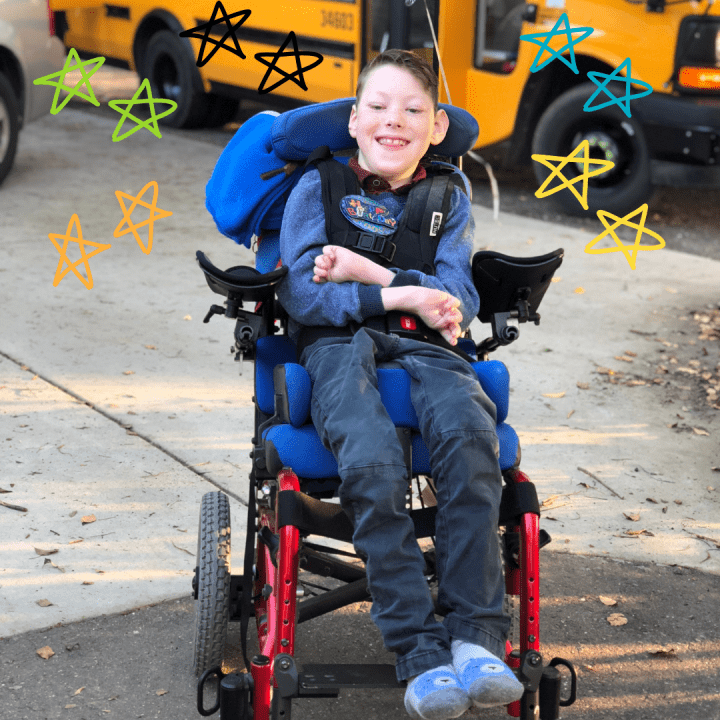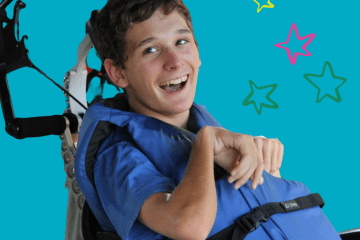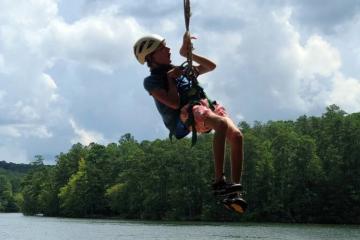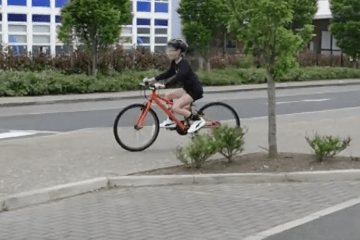Complex Rehabilitation Technology Fact Sheet

What is complex Rehabilitation Technology
Individuals with cerebral palsy often require customized equipment to assist with seating, positioning, standing, and walking needs. Everyone’s body is unique and the way cerebral palsy impacts the body is different for everyone. This can make finding just the right equipment to meet personal needs a challenge. It is not likely that an individual with cerebral palsy can pick a wheelchair out on Amazon and it arrive to be just the right fit!
For this reason, there is an entire field of rehabilitation dedicated to researching, developing, manufacturing, fitting, and building custom equipment, known as Complex Rehabilitation Technology. This technology includes complex power and manual wheelchairs with highly adaptive seating and positioning systems, standing systems, gait trainers, toileting and bathing systems, and custom car seats, just to name a few.
Complex Rehabilitation Technology is considered medically necessary to meet unique, individual medical, physical and functional needs. Often the goal of this equipment is, first and foremost, to provide a safe, properly positioned, and comfortable modality for those with cerebral palsy and other medical conditions, and their caregivers, to maintain health and perform activities daily living in the home, as well as to prevent secondary conditions such as pressure sores, digestive issues or constipation, and bone density loss. For example, the seating system for a young child with limitations to their head control is positioned in such a way that the child can safely eat or be fed by their parents. However, the ultimate goal of this equipment is to enable, enhance and promote participation and function, and maximize independence.
With careful consideration and planning, Complex Rehabilitation Technology, is designed to help individuals maximize their potential by addressing current and anticipated physical and medical needs and helping them access home, school, and community throughout the lifespan. This impacts cognitive function, social and emotional well-being, and promotes adaptive functional skills. Even at an early age, research has demonstrated that very young children can learn to drive powered wheelchairs which allows them to to substitute developmental exploration that would have happened through cruising or crawling, with learning to explore in a power wheelchair. For young children this can positively impact cognitive and social development. For teens and adults, complex rehabilitation technology is a crucial component for individuals to have independence, but also reduces other medical complications that could potentially arise without such specialized equipment, and in some cases the additional costs of caregiver assistance.
HOW DO I OBTAIN EQUIPMENT?
Complex Rehab Technology is typically provided through an interdisciplinary team consisting of a Physician, a Physical Therapist or Occupational Therapist, and Rehab Technology Professional, such as an Assistive Technology Professional or Rehab Engineer, and a supplier. The team provides a comprehensive evaluation of the individual’s physical, medical, technology, and functional needs. Additionally, the individual is often able to demo, or trial equipment to determine best fit. During the assessment, the team evaluates the unique home, school and community environment, as well as the individual’s transportation needs. For example, it would be inappropriate if a team were to recommend a power wheelchair for someone who lives in a home that has narrower doorways and has a vehicle that are inaccessible, unless the there is also a plan (and a financial plan) to modify accordingly and/or purchase an adaptive van.
After the team completes the evaluation, the next step is to provide the prescription, documentation, Letter of Medical Necessity, and any research necessary supporting the use of the equipment for medical purposes to insurance. The team is also responsible for working with the individual or caregivers to file appeals for equipment denials or help to find alternative sources of funding. Once funding has been secured, the equipment is made to order, specifically for the individual’s specifications. Once it is built, the supplier will assemble, deliver, fit and teach the individual and caregivers how to use the equipment. They frequently do this with the help of the PT or OT to ensure that the equipment fits just right and that everyone understands how to use it properly. Training and adjustments are often on-going as needs, growth, and functional capabilities change. Of course, repairs and maintenance are also often a regular part of complex rehabilitation technology care.
ADVOCATE FOR YOURSELF
It is important to have open, honest conversations with your team about what your, or your loved one’s, goals are, what your current and planned living, work and community environment looks like, what you enjoy doing and what barriers exist in the physical environment that might need mitigating. Before your appointment with your care team, make a list of your current and anticipated equipment needs. Be thoughtful about where you might be having issues or things you have always wanted to try but didn’t think possible. Unless you speak up, your team may never know. Your treatment team should always be thinking about how to help you be an active participant in the community and they want to help you find just the right equipment for your unique needs. There is technology out there to help!
The below graphic is a helpful tool to use to anticipate equipment needs and activities by GMFCS level and age or developmental stage.
The ultimate goal of this equipment is to enable, enhance and promote participation and function, and maximize independence.





